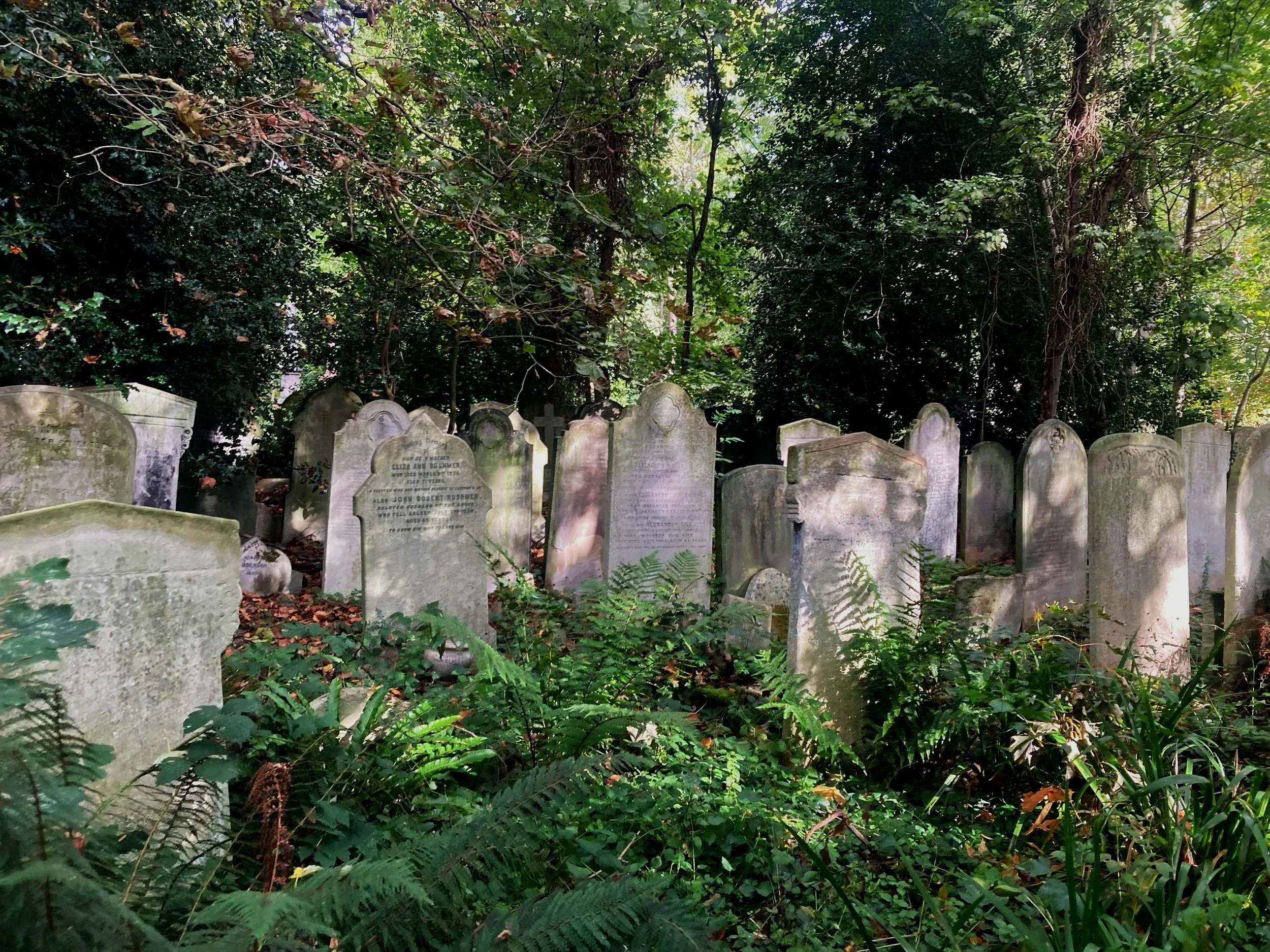Tower Hamlets Cemetery Park, East London
Victorian-era gravestones among the forest in Tower Hamlets Cemetery Park, London
Victorian-era London saw a huge population boom with thousands of people moving into the city centre, but this increase in population also meant an increase in dead bodies needing somewhere to go. In a time that was rife with diseases such as tuberculosis, cholera, and typhoid, and with no antibiotics to treat the ill, the death rate was high, and the small churchyards of London became quickly saturated. These overcrowded churchyards eventually began to seep into the water supply, causing contamination, and even more death and disease. Parliament eventually stepped in, leading to the formation of London’s Magnificent Seven: seven garden cemeteries on the outskirts of the city, which include Highgate in the North, Kensal Green in the West, Bromley in the South, and Tower Hamlets Cemetery in the East.
Located in the Mile End area of East London, this working man’s cemetery is the final resting place of 350,000 people who were laid to rest between 1841 and 1966, buried in both private and communal graves on its 30-acre site. Though not filled with the rich and famous like its counterpart at Highgate, Tower Hamlets has a number of the lesser known celebrities, including the grave of Dr Llewellyn, the man who performed the autopsy of Jack the Rippers first victim, and the impressive monument belonging the to Westwood family, owners of the Thames Iron works whose employees went on to found West Ham Football club.
The graveyard closed for good in 1966 due to financial constraints and no longer takes any burials. However, the site has found a new life after being saved from demolition, becoming the Tower Hamlets Cemetery Park, and a designated nature reserve since the year 2000. It is now a public park in the heart of East London for all to enjoy, with walking trails, meadows, and a vast woodland area where you can admire the old gravestones peeking out from between the trees!
Small gravestones in Tower Hamlets Cemetery Park, representing some of the many communal burial sites
Though no longer an active cemetery, a new addition to the Tower Hamlets Cemetery Park was made in 2016. A bright white monument depicting two hands holding a cockney sparrow was erected to commemorate the estimated 513 children who died in care between 1876 and 1924 and were buried in unmarked communal graves in the cemetery.
London in the 1800s was not a time to be poor. Poverty, malnutrition, and disease were so widespread that one in five children often died before the age of five. And after a particularly nasty cholera epidemic swept through London’s East End, killing over 3,000 people, those children who were lucky enough to survive often found themselves orphaned and living on the streets. Dr Bernardo was an Irish doctor and philanthropist who, after seeing firsthand the hardship being faced by children around the East End, went on to found an organisation catering to the poor and deprived children of Victorian-era London. He started both the Ragged School in East London and residential homes to help educate and care for the thousands of destitute children in the area. Though some succumbed to their illnesses, many of the children were saved, with over 8,500 children having been cared for by the time of his death. The children's charity based in the UK called Bernardo’s bears his name to this day.
Though not as glamorous as some of the other Magnificent Seven in London, a walk through Tower Hamlets Cemetery Park serves as a reminder of the hardships that people suffered due to disease and poverty, and of those people who sought to make life better for their fellow human beings.
Crooked gravestones of Tower Hamlets Cemetery Park, London
Top Tips
Getting there: Just around the corner from Mile End tube station in East London.
Opening hours: The cemetery park is open 24 hours a day, 7 days a week for pedestrians, cyclists, and well-behaved dogs. It is free to enter.
The park has numerous gravelled paths and benches throughout the area, and a ringed path of approximately 1 km in length running along the perimeter. There is no parking or public toilets on site, but if on a tour with the Friends of Tower Hamlets Cemetery Park, then they will let you use their facilities.
The Friends of Tower Hamlets Cemetery Park have the occasional tour and can be booked for anything from forest schools to birthday parties! Visit their website for further information https://fothcp.org/about/the-friends/


